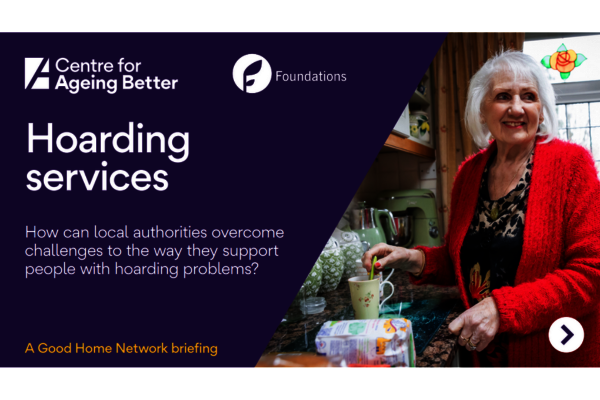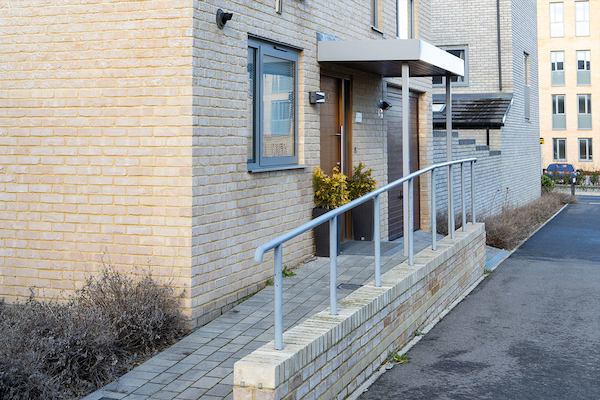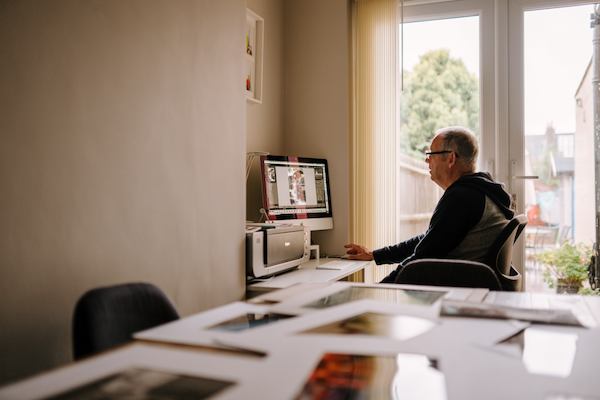Alice’s story – how a progressive health condition and a recent diagnosis for autism impacts what I need from my home

Alice works for the Church of England as a disability advisor and specialises in women’s issues in the clergy.
She and her two adult children have Ehlers-Danlos Syndrome – a rare inherited condition that affects connective tissue. Both children have cerebral palsy and Alice’s son has additional complex physical and learning disabilities. Earlier this year, Alice also received a diagnosis of autism.
She says: “For me [an accessible home] means having a home that, as my mobility decreases which it’s going to, I can continue to live in as eventually I will be a full-time wheelchair user.”
Alice and her husband moved to their current house when the two children were young. It was a rundown, 1960s bungalow that they adapted while living in it to make the house accessible for the children.
As both children no longer live at the family home and only return for short visits, Alice’s own needs – which for years had slipped into the background – are now foremost in her mind. She uses a wheelchair when she's out and at work but is trying to maintain mobility at home by walking inside.
However, she knows that at some point in the future she will need to use a wheelchair at home as well and that will necessitate “quite a lot of rejigging of stuff” if they stay in the same house.
Alice also knows that the progressive decline in her mobility means her needs will change and their current house may not be suitable in the future. She is thinking about needing a spare room for a live-in carer and requiring a house that can be adapted for aids such as a hoist. But on top of that, her recent diagnosis of autism means she is now considering a range of different needs.
My diagnosis has enabled me to start unpicking some of the things that are really important about where we live but I think I hadn’t realised,
"What I’m learning now is things like light and space and sound are actually as important as being able to move about the space."
She recognises that being able to see nature is incredibly important for her wellbeing. With her garden on a slope, she can no longer safely go into the garden but sitting and looking at the garden wildlife and trees through the window helps control her stress. She understands this to be a manifestation of her autism and is a visual stim, a self-stimulatory behaviour that involves staring at objects and light to engage the sense of sight.
“I really like being in this room because there's a big window, and it looks out on the trees, and I can see the birds and the squirrels and the things happening in the trees. And I actually find that really soothing; the tree leaves moving, and all those things.”
Alice has also realised that her sensitivity to noise and to light levels is due to her autism. Unfortunately, Alice’s husband has migraines triggered by bright lights while Alice needs lights at a specific level.
She says: “He spends a lot of time turning everything off. I spend a lot of time turning them back on again. It’s a lot of compromise that goes on. If the lights are either too bright or too low, it raises my anxiety and stress levels quite a lot.”
Armed with her new diagnosis, Alice knows building understanding of what she wants and needs is a process: “I’m still learning a lot about those more subtle things and understanding actually how that works for me – which I need to know if we’re going to move at some point, because I need to know what I need in the new place.”
As her husband is not keen to move house and she has a list of quite specific needs, Alice thinks it will take a lot of discussion and planning in the first place and that it will take a long time to find the right place for them: “It’s not a long list, but it’s quite a crucial list.”
As well as wanting to be close to nature, remaining close to people is important as well: “I don’t do a lot of socializing, because I don’t have a lot of energy left at the end of the day. But it’s good to be in a place where I can feel that there are things I can do if I want to and, when I retire as I plan to in two years, there are things I can join if I want to.”
Alice doesn’t want to move to older people’s housing and would prefer to remain part of a more mixed community as she likes being around young people and children and families. Living somewhere she isn’t reliant on a car and has access to public transport is also key
I think, as my mobility decreases, being somewhere where I’ve got access to public transport because there will come a time when I can’t drive so it’s going be really important.

Alice is a qualified accessibility auditor and, having worked for three different housing associations, is armed with lots of knowledge and experience. But when she and her husband first adapted their family home, they were novices and, as Alice says, there wasn’t much help around. The architect they engaged initially ‘didn’t get what we wanted’.
She believes that impartial advice, like that proposed in Ageing Better’s Good Home Hub model, is crucial for people as they look to make changes to their homes – including for people who pay for their own adaptations.
Alice says: “I think maybe being handheld by somebody who understood accessible design more could have helped because we were just making it up. I think it’s largely by chance that we got something that was pretty much usable.”
She is a strong believer in learning from others’ experiences and finds that stories are key to building understanding: “I learn a lot by listening to other people’s stories. I’ve learned a lot about my autism through listening to other people’s stories.”
“Listening to stories is really helpful because you get ideas and a better understanding of yourself,” says Alice. “Storytelling enables other people to say ‘oh yeah, that’s important to me, too.’, ‘I hadn’t thought about that’, or ‘that’s a really good idea.’ So the exchange of stories and ideas is really, really important.”



